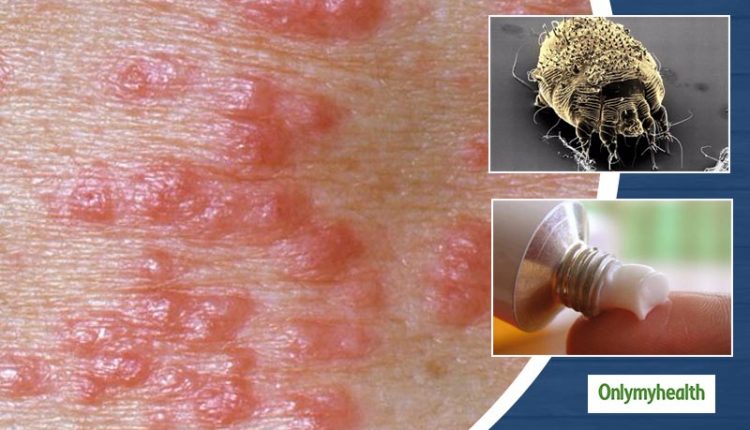
Scabies: symptoms and treatment of Sarcoptes scabiei infection
Scabies is an infection caused by a microscopically small (0.3-0.4 mm) external parasitic skin mite, Sarcoptes scabiei
Scabies is a very common infection: an estimated 300 million cases occur worldwide each year
The parasite reproduces quickly and passes from human to human through prolonged contact with the skin of an already infected person; a handshake or hug is rarely sufficient.
These characteristics mean that contagion is favoured by crowded conditions and occurs more frequently between members sharing the same environment.
Precisely because of the frequent infection between partners, caused by staying in the same bed, and the choice of ‘sheltered’ areas of the skin such as the groin and sexual organs as the preferred site of infection development, scabies was erroneously considered a sexually transmitted disease.
The true causes were instead discovered by a Tuscan naturalist, Diacinto Cestoni, who in the 18th century identified the scabies mite as the infectious agent of the disease.
Scabies: the development of the infection
The itching, typical of the infection, is mainly caused by the behaviour of the female mite, attracted by the heat and smell of human skin.
As soon as it reaches the skin of a new host, the insect, thanks to corrosive secretions, creates a burrow immediately under the outer layer of the skin, the ‘horny’ layer, in which it nests, awaiting the arrival of a male.
When the time comes to lay eggs, the female digs a burrow in the most superficial layers of the epidermis and deposits her eggs there, which hatch in 3-10 days.
The larva then migrates to the surface, moults into a nymph stage and matures into an adult individual.
Generally, the infection is due to a small number of inhabitants, about ten, which makes it difficult to identify the parasite.
Scabies prefers the warmest and most protected areas of the skin: typical infection sites are the areas always covered by clothing or the interdigital areas and at the base of the nose, or the back of the knee or the front of the elbow.
Possible targets are also the armpits, areas around the genitals and the breast nipples.
The average lifespan of a scabies mite on the skin of its host is about 3-4 weeks.
In contrast, the insect does not survive longer than 2-3 days when away from the human body.
Symptoms of scabies
The first symptom of a scabies infection is itching, initially at night, caused by the mites rising to the skin.
Small reddened bumps and pimples (the animals’ ‘burrows’) then appear.
The more advanced stages of the infection are characterised by scaly, crusty skin, also due to the wounds that the person causes himself by scratching the itchy epidermis.
It is precisely the self-inflicted wounds that represent potential foci of secondary infections, which are especially dangerous for immunocompromised persons.
A person can be infected well before realising the impending danger: the first symptoms appear after 4-6 weeks of incubation, the time needed for the eggs to mature and for an allergic reaction that the body develops over time against the mite and its secretions.
Diagnosis and treatment of scabies
Diagnosis is generally made by dermatologists by identifying the mites’ burrows and their ‘tunnels’ under the skin, which is difficult both because they are scarce and because the areas are often irritated.
The diagnosis is then confirmed by examining the area under the microscope and detecting the pathogen or its eggs.
A mite can be removed from the skin by washing with water or rubbing the skin with a soft cloth (so as not to cause further wounds to the skin): these remedies do not completely eliminate the infection, but help to reduce the population of infectious agents.
Moreover, the human immune system is able to produce antibodies against the parasite, which, however, are not able to completely control the infection.
For the treatment of scabies there are ointments, to be applied to infected areas and all over the body, or systemic medicines to be taken orally.
Although the infection is easily eliminated the itching, precisely because it is allergic in nature, persists for about a month.
Because of the long latency period, it is important that prophylaxis against scabies is also carried out by all those living with the infected person.
Scabies in animals
Various species of scabies can also infect many domestic animals: severe itching and secondary skin infections are also characteristic symptoms of animal infections, accompanied by weight loss and general debilitation.
Many species of animal scabies can be transmitted to humans.
However, these are not able to complete their life cycle in humans and may only be a source of momentary itching.
Precisely to avoid continuous animal-to-human contagion, it is necessary to treat animal infections as well.
Read Also:
Emergency Live Even More…Live: Download The New Free App Of Your Newspaper For IOS And Android
Atopic Dermatitis: Treatment And Cure
Allergic Contact Dermatitis And Atopic Dermatitis: The Differences
Managing Chickenpox In Children: What To Know And How To Act
Monkeypox Virus: Origin, Symptoms, Treatment And Prevention Of Monkey Pox
What Are The Symptoms Of Monkeypox?



